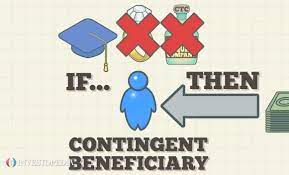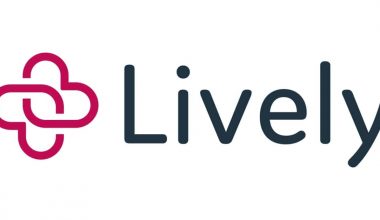An ESOP, or Employee Stock Ownership Plan, is a pension scheme. However, (ESOPs) accomplish far more than that; they boost morale, boost output, keep talent in the community, help businesses thrive for the long haul, and more. There are a number of laws and regulations in place for ESOPs that are similar to those for 401(k) programs. However, ESOPs differ significantly from 401(k)s and provide far more benefits to businesses, owners, employees, and communities. The company for instance can sell stock to the ESOP and utilize the money to settle debts, expand, etc., making the ESOP an appealing financing option. Learn more about the ESOP plan, distribution, average payout, and differences (Esop vs Espp).
What is an ESOP?
An ESOP is a type of employee stock benefit plan that provides workers with a financial stake in the firm through the purchase of company stock. It is a retirement plan in which employees are given shares in the company in exchange for their service. As a corporate finance strategy, ESOPs are generally utilized by employers to align the interests of their employees with those of the shareholders, and the sponsoring firm (the selling shareholder) and participants enjoy a number of tax benefits as a result.
ESOPs are more common in privately held businesses than in publicly traded ones. With an ESOP, employees can become part-owners of their companies at no out-of-pocket expense to themselves, while also providing significant tax benefits to the company and its owners. When business owners want to retire or sell the company, raise capital, provide a benefit to employees, or incentivize them to stay with the company, they can establish employee stock ownership plans (ESOPs).
Nearly 14 million workers are covered by ESOPs as of 2022, and 6,500 plans are in operation, as reported by NCEO, a nonprofit that promotes employee ownership.
How Does an Employee Stock Ownership Plan (ESOP) Work?
An ESOP is typically created to make succession planning in a privately owned firm easier by giving employees the chance to purchase shares of the company’s equity.
The ESOP is established by the company as a trust fund, a separate legal entity from the company itself. This can meanwhile happen in two different ways. The first is with a leveraged ESOP in which the company either provides the ESOPs with shares or the funds to purchase shares. On the other hand, the ESOP takes out a loan from the firm to purchase shares. The ESOP then acts as a trustee for the employees by holding onto the shares.
In spite of what you may have heard, businesses that provide ESOPs can’t be biased and must name a trustee to operate as the plan’s fiduciary. It is not possible, for instance, for ESOP participants to have no voting rights or for senior employees to get more shares.
Ownership in ESOPs may have things to do with certain factors though. This may include factors such as salary in relation to other workers or length of service. A vesting schedule is frequently present. And a person’s eligibility for membership in the ESOP may depend on how long they have been working with the company. For instance, a person might need to work for the business for three to six years before becoming eligible for the entire range of ESOP advantages.
Owners may be able to cash out some or all of their ESOP holdings upon leaving or retiring from their employer. However, for those under the age of 59½ or 55, should you be forced to quit your employment, there can be taxes on your distribution, just like with various kinds of retirement plans.
Why Would a Company Do an ESOP?
An ESOP plan generally gives room for a “low and slow” transition of ownership. ESOPs support an entrepreneur’s succession in addition to transition strategy by enabling the business owner to gradually transition from CEO to board chair and retirement while aiding in the preservation of the company’s values and core principles.
Is an ESOP Good for Employees?
Yes, ESOPs are typically regarded as a benefit for employees. Companies that don’t routinely cut and replace personnel are more likely to implement these programs. And this generally results in higher payouts and financial incentives for employees.
What Happens to Esop When You Leave Company?
An employee is eligible to collect the vested portion of the ESOP retirement plan when he or she quits your company. The remainder belongs to the business. For retirement plans, a vesting schedule is developed to stop continual employee churn from depleting your plan’s assets.
Is Esop Based on Salary?
ESOPs are provided to employees in exchange for a portion of their salary. The business decides that a specific portion of its shares should be divided among its staff. Most businesses provide some employees shares in exchange for a portion of their salary if they reach a particular level of seniority.
How Do I Get My ESOP Money?
If you are granted this, you must ask the ESOP company for the distribution forms. These documents could be provided to you as part of your exit or retirement documentation. Depending on the rules of the ESOP distribution plan, you can get your payout as a lump sum or as a series of payments.
What Is an Esop Distribution
Retirement benefits are a major perk of an ESOP for employees who choose to take part in the program. This type of payout is known as an “ESOP distribution.” However, retirement, termination, or exiting employees may have to wait years for their benefits to be distributed. This is as due to the complex nature of ESOP distribution requirements.
ESOP distribution, in simple terms, is the payment of rewards to eligible participants. And, there are numerous ways in which participants can be eligible for a distribution;
- They are older than 59.5 and have retired from the company.
- They are over 55 and have been let go from their job or have resigned voluntarily.
- Despite being over 70 and a half, they continue to work for the company.
A participant may also be eligible for “in-service” payouts under one of two conditions.
- An ESOP in-service distribution may take place while the participant is still working for the company.
- If a participant meets the requirements for a “hardship” distribution, is over 55, has been a part of the plan for more than ten years, and meets the requirements for a diversity payout, they may as well be eligible for a during-service distribution.
Read Also: TAKING OUT A LOAN: How to Take It With or Without Credit
How Does an Esop Distribution Work?
The Internal Revenue Service regulates ESOP payouts. This necessitates that they conform to a set of rules and requirements. Every employee stock ownership plan (ESOP) needs a distribution regulation. This can be part of the plan document or a separate document. The document will detail the various payout alternatives, the minimum and maximum lump sum amounts, the payment schedule, and the vesting conditions. Companies might choose to disburse the distribution; in the form of cash, shares, or a combination of the two.
However, one must be vested to be eligible to get their ESOP distribution. If you are not vested and you leave your job, for instance, you might never be eligible for a payout. On the other hand, if, fortunately, you’re vested, you will have to request the distribution forms from the ESOP company. These documents could be part of the retirement or termination documentation you get. Depending on the arrangement of the distribution plan, you may receive your ESOP distribution in a lump sum or in installments. While your benefits may be paid out in the form of either company shares or cash. In all depending on the stock price at the time of distribution in this instance.
Esop vs Espp
Employee stock ownership plans (ESOPs) and employee stock purchase plans (ESPPs) are two popular types of employee stock benefits. They offer participants tax advantages and the chance to save for retirement and grow wealth, respectively. They all promote employees’ financial and emotional investment in the company, which helps with retention and boosts morale and output. When deciding between an ESOP vs an ESPP, many business owners become confused.
There are some parallels between ESOPs vs ESPPs, but there are also key distinctions—probably the most. The key distinction is that with an ESOP, employees get shares from their employer at no expense to themselves. This as a result makes it a qualified defined contribution retirement plan. Employee stock purchase plans (ESPPs), on the other hand, compel employees to buy stock at a discounted rate.
Let’s examine some more differences between an ESOP and an ESPP, as well as the benefits and drawbacks of each.
Esop vs Espp – The Difference
The most obvious distinction between an ESOP and an ESPP is when and in what manner the stock is transferred to the employee.
The stock or shares are given to the employee(s) free of charge through an Employee Stock Ownership Plan. Contributions to an ESPP are used to buy shares of stock at a discount for plan participants.
With qualified defined contribution retirement plans like ESOPs, the money in the account is not taxable until it is distributed. So selling shares or taking distributions before age 65 is not an option, even if you leave the company or retire early.
In contrast, ESPPs allow employees to voluntarily invest their own money in the stock market. Unless there is a holding period in place, participants can sell their shares as soon as they have vested, regardless of when they acquire them.
What is the Average Esop Payout?
In 2018, researchers at Rutgers University found that the median employee ownership stake in an ESOP company was worth $134,000. This is 29% higher than the average 401(k) balance reported by Vanguard that same year, which was $103,866.
In 2018, 54.7 percent of ESOP employers that responded to a study by the ESOP Association made contributions of 11 percent or more of employees’ salaries to their ESOP accounts. (Seventy percent of defined contribution plans offered by Vanguard have a top employer contribution of three percent.)
There are many companies that don’t provide any sort of pension for their workers. In contrast, only 2.6% of ESOP companies that responded to a poll by the ESOP Association also offered pensions to their employees. Whereas 93.6% offered a 401(k) in addition to the ESOP.
The American workforce needs retirement plans, such as ESOPs, that don’t require employees to put up any money out of pocket. Twenty-one percent of Americans have nothing saved for retirement, according to research by Northwestern Mutual. Financial Engines found that in 2015, 25% of workers who participated in a 401(k) plan did not contribute enough to receive their employer’s full match, costing them an average of $1,336 a year.
Read Also: BEST EASY LOANS TO GET IN 2023: Ultimate Guide
Once the ESOP vesting period comes to an end, then you can sell the shares may. Taxes must be paid during the selling process. While these amounts are determined in accordance with the guidelines established by the Indian Revenue Service(IRC).
Conclusion
Employee stock ownership plans (ESOPs) are an enticing means by which the wealth locked up in the shares of a privately held company can be released to the employees who have contributed to the company’s success.
ESOPs benefit both the company and its employees by incentivizing hard work with the promise of financial gain. However, they are not always easy to understand, and participants may experience frustration as a result.
Related Articles
- DISTRIBUTION MANAGEMENT: Definition, Benefits, and Software Solution
- TWITCH AFFILIATE PAYOUT: Meaning, Method, And Review
- WHAT IS AN EMPLOYEE STOCK OWNERSHIP PLAN (ESOP)? How It Works
- EXIT STRATEGIES: Examples and Best Strategies For Startups
- WHAT IS A DIVIDEND: Example, Stocks, Payment on Shares, & Income






